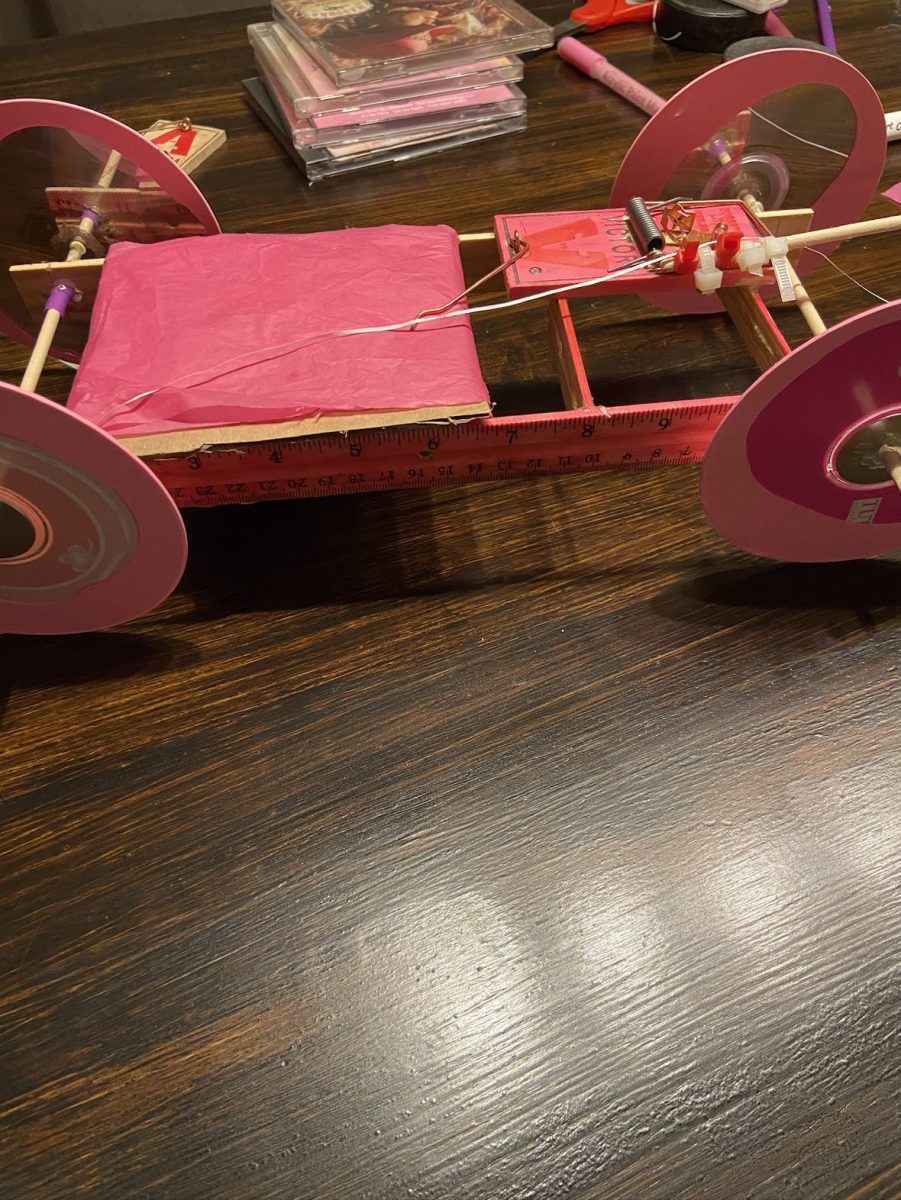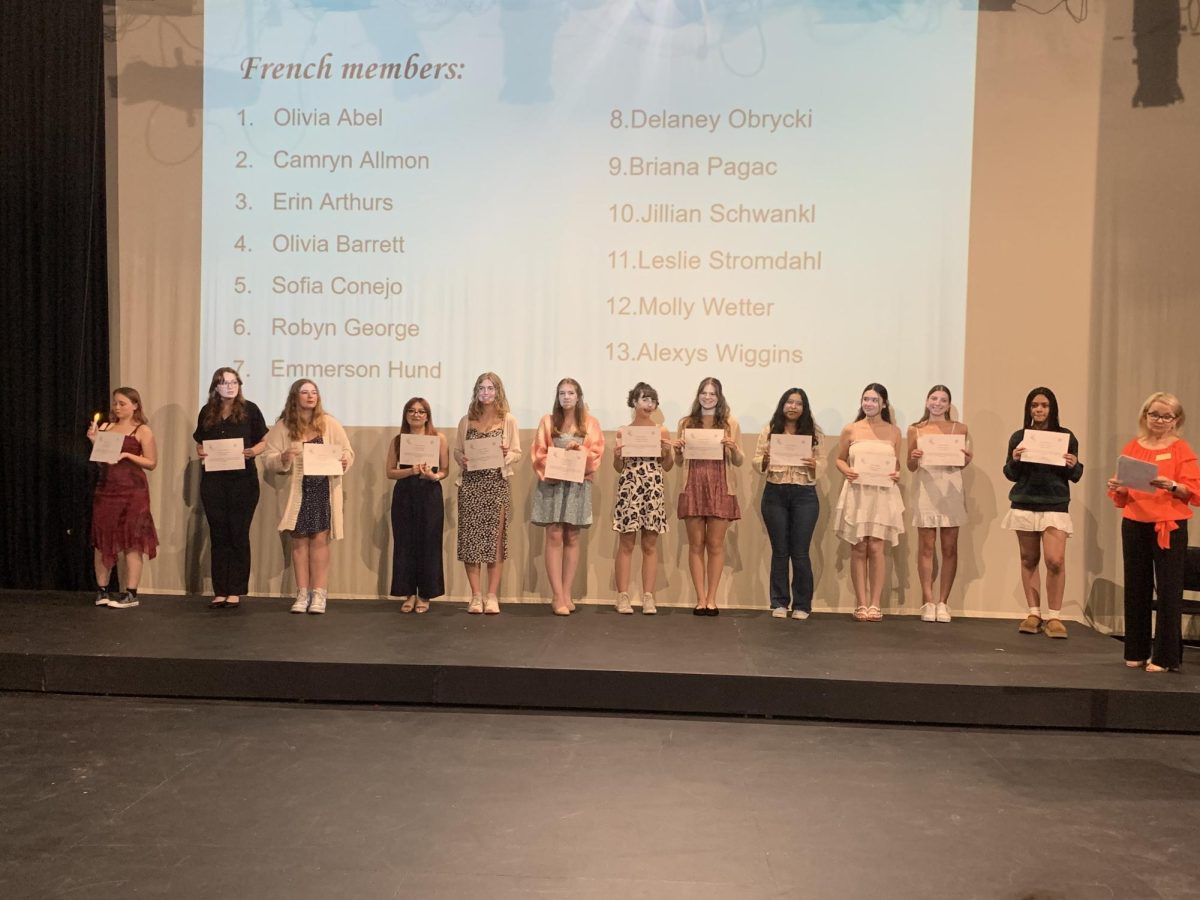Every year physics students are given a first-semester final project where they are prompted to construct a rat trap powered device that will be worth ten percent of their grade.
The project has gone through many iterations. Students have gone from making a tractor to having to push a hockey puck to the current project. This and the past couple of years prompt has been to move a hockey puck the farthest distance possible solely using the energy provided by a maximum of two rat traps. Students have struggled with the project for years, but this year has seen the success of a new all-time champion in distance.
“There are all sorts of versions of the project we’ve done. We’ve done a tractor pull where we had students pull a block. We did a sandpit where we constructed a whole sandpit. That was pretty fun because cars were like sinking and spinning out stuff,” said physics teacher Steve Colletti.
Students have found many hurdles they have to jump through while making the project. The project is done outside of class using the concepts learned during class. There are a variety of components to the project. Students must construct the project and are graded on how well they complete that task. They are also required to create a journal detailing their process, why they did what they did, and what physics concepts are used in the project. There is also a decorative aspect to the project. Whatever contraption the student makes must have a theme and be presented to the class to participate in a competition. Whoever is voted the best dressed is awarded extra credit.
“It was a little hard because you had a partner so you have to work around different people’s schedules, but we made it work,“ said senior Emily Janowski.
Extra credit is also awarded to those who perform well in gaining the highest amount of displacement. The distance grade is on a curve that includes all levels of physics. This year the champions were Jacqueline Cordova and Kaylee Juarez, but they weren’t just the champions of this year. Their car set a school record for going the farthest distance in the history of the project.
“I won first place. My success in the project was it actually worked, and it actually went farther than the average person got,” said senior Jacqueline Cordova.
“My wheels ended up really straight, and the project ended up working. My decorations were the thing that got me extra credit points that was really successful,” Janowski said.
The purpose of the project is to join together concepts students have been learning about all semester into an all-encompassing project.
“Now we have a version of physics where we do everything in one dimension first. So I tried to get a project that incorporated impulse and momentum, as well as energy and it could incorporate Newton’s laws,” Colletti said.
The project is a fun way to get students thinking about physics. They show off their physics knowledge and compete with classmates. Given that grades are at stake, this can create some lighthearted hostility between students. The structure of the curve works in a way that benefits those who perform well giving them a score over 100 percent when they excel. It in turn hurts those who don’t do as well bringing their grades down the better others do. As the winners, Cordova and Juarez were the cause of lower grades for many students. They don’t care though, because they performed so well.
“I’m really involved with the school, so I had sports after school, which made it difficult for me to find time for the project. But me and Kaylee were still able to come up with a project that beat everyone and we came in first place,” Cordova said.
The project prompt has been the same for a few years now. This gives students time to talk with future takers of the class about strategies. This has prompted Colletti to change the project up for the coming years and get new, original creations from students.
“I think next year I’m going do something different. I don’t know what yet. We talked about doing a hill climb. Like just putting a ramp and seeing if just the car can get up the ramp,” Colletti said.








